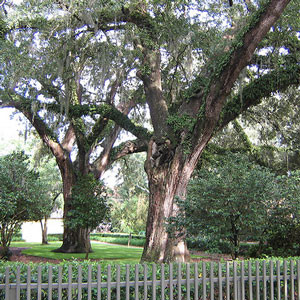Why Wild Animals Like Your Yard!
By Chris Williams on September 11, 2013.
 Can’t understand why squirrels, raccoons, opossums and other so-called “nuisance wildlife” always seem to end up in your yard? Wild animals need food, water, and shelter just like people. If you provide it, they will come! Then they will likely cause damage, or carry parasites and diseases into your yard. When you have a problem with nuisance wildlife, you should contact your local animal control officer or a pest control company, like Colonial, that is licensed to remove wildlife and help you correct conditions that attract them.
Can’t understand why squirrels, raccoons, opossums and other so-called “nuisance wildlife” always seem to end up in your yard? Wild animals need food, water, and shelter just like people. If you provide it, they will come! Then they will likely cause damage, or carry parasites and diseases into your yard. When you have a problem with nuisance wildlife, you should contact your local animal control officer or a pest control company, like Colonial, that is licensed to remove wildlife and help you correct conditions that attract them.
Help Keep Wildlife Out of Your Yard and Home by Correcting the Following Conditions:
- Access under building. Wildlife will use accessible crawlspaces under buildings and trailers as denning sites and hiding places during the day.
- Branch piles/debris. Wildlife may use branch piles and debris piles as shelter or denning sites.
- Building damage. Wildlife may gain access to buildings through damaged screens, holes in walls, damaged siding, and damaged fascia boards and soffits near the roofline.
- Burrows. Wildlife may nest in abandoned woodchuck (groundhog) or rat burrows.
- Compost piles. Wildlife will be attracted to compost piles if vegetables and other foods are layered there.
- Fruits and nuts. Wildlife will feed on berries, fallen fruit, and fallen nuts on the ground, especially in late summer and fall.
- Missing/damaged chimney cap. Wildlife can enter accessible chimneys to rest during the day, and on occasion will use a chimney as a denning site, particularly in spring.
- Open dumpster. Wildlife will enter dumpsters for food.
- Overgrown plants/weeds. These provide shelter and cover for wildlife foraging for food near occupied areas. They also contribute to wildlife nesting near buildings.
- Pet food. Pet food bowls that are left outside, especially at night, are an open invitation to hungry wildlife.
- Shrubbery against building. Wildlife can travel hidden in protected corridors between tall, thick shrubbery and building walls. Animals can use tall shrubbery touching a building as a route of access onto and into the building.
- Spilled bird seed. Seeds are high-energy foods and are a favorite of wildlife. Certain animals will often make bird feeders in an area a regular foraging stop.
- Spilled trash. Food in spilled trash around dumpsters, trash receptacles, picnic tables and the like can provide food for wildlife.
- Stacked building materials. Wildlife may use stacked lumber, stone, shingles, etc. as a shelter or denning area.
- Trash receptacles that are not wildlife-proof. Open-topped trash receptacles, or those with lids not secured, provide food for foraging wildlife.
- Tree branches touching roof. Wildlife will use tree branches as a regular highway onto, and sometimes ultimately into, buildings if the branches are touching the building or are within a few feet (in rare cases up to six feet) of the building.
- Tree holes. Some animals will seek out any trees with open holes to use as nest sites.
Photo credit: freestone / Foter / CC BY-NC-SA